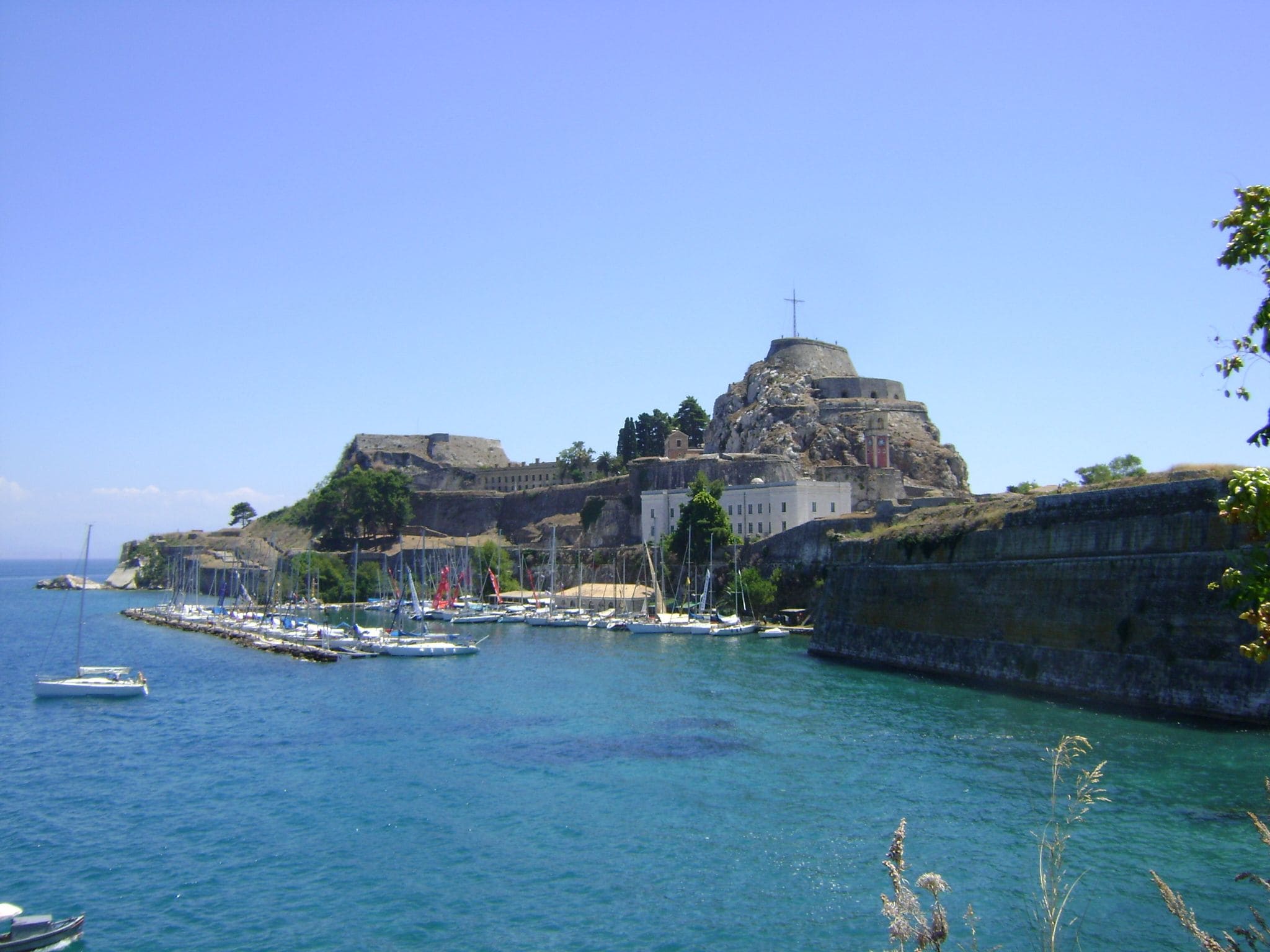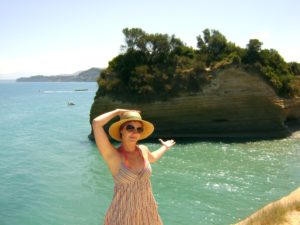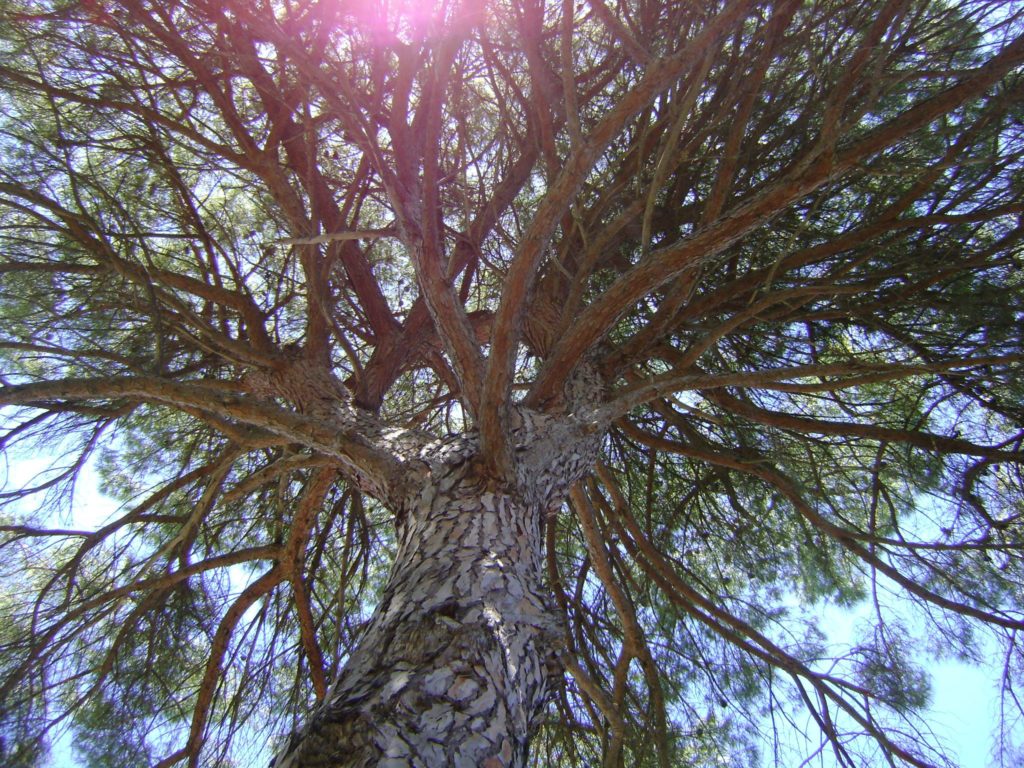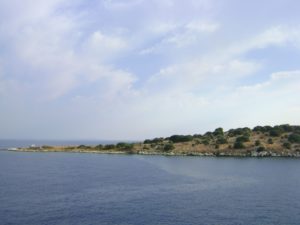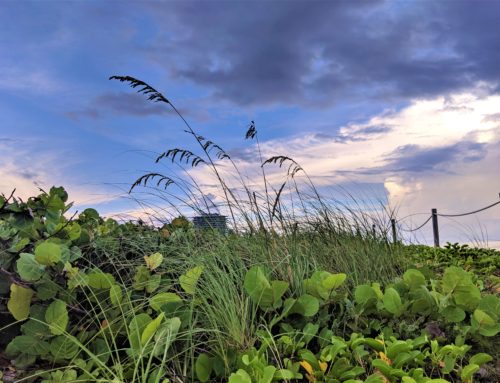Green ambassadors of Corfu
One of the largest Ionian Sea islands got its name after nymph Kerkyra: Corfu. According to Greek mythology, Kerkyra was loved, abducted, and married by Poseidon – a god of the Sea. Now, you may think such a myth is not worth further exploring, that it’s just a scary tale. Still, arrival to Corfu will place you back right into those ancient times. And change your opinion of local spooky stories.
Olives and cats, cypress and Corfu
Almost immediately you will feel all the richness of historical sites, sleepy villages, and great fortresses. A smell of old dry land and evergreen trees’ resins. Such an impression is expected. Don’t forget: the island was related from its earliest age to Mycenaean Greece, Corinthians, later Byzantine Empire. Ottomans tried to conquer it several times, Venetians ruled for almost four hundred year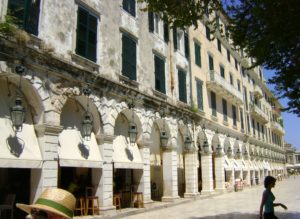 s. Later French and British empires were present and influenced the island as well.
s. Later French and British empires were present and influenced the island as well.
But, what made this ever turbulent battle place so important? You would be surprised, but besides its strategic position and fertile lowlands, there was an ever-present trade/tourism/traffic hub. Wanna guess what unexpected goods turned out to be precious and luxurious?
Yup, you got it: plants!
So, plants as postcards?
Economically and esthetically, those ancient times had postcards and promoters of their own. Plants in the form of spices, herbs, and olive oil were (and still are) beautiful ambassadors. Let us meet some of them…
Enjoy your shrimp cocktail, or just squeezed lemon juice in one of the Old town restaurants
To say the least, plants contributed the fame of Corfu, attracting conquerors, fishermen, priests and travelers.
Olive tree
The significance of the olive tree Olea europaea, almost needless to say – is huge in many domains even nowadays. So, you can imagine its importance thousands of years ago. Besides religious, cultural, and culinary, the economic impact of this long-living tree was probably most important. Edible, healthy fruit, divine oil, and highly appreciated trunk were probably one of trading foundation (as of the rest of Greece).
The island is literally covered with olive groves, surrounded by nets along the roads across the entire island. Nets are beneath the trees, for fruit gathering, so it wouldn’t fall on the road. Many of those are organically grown, being pride and joy of Corfu people.
Cypress in Corfu
Probably the most beloved evergreen Mediterranean tree is Cypress – Cupressus sempervirens. Not only for folklore reasons – it reflects upper floor erecting, and symbolizes mourning. Cypress has a great fragrance and tall, elegant looks for its upward-growing branches. The cosmetics industry uses this plant big time, same like landscapers – it is one of favorite local ornamental trees. For its beauty, longevity, fire-, heat- and for being erosion resistant. For instance, the world-famous Iranian exemplary (almost Corfus Mediterranean neighbor) is 4000 years old. Makes you think a bit, no?
Oaks without squirrels
Turkey oak (Quercus cerris) is a deciduous tree grown all around Europe today. But, it is native for this area (hence the name: it grows in south-eastern Europe and Asia Minor). As expected, shiny thick leaves endure windy, hot, dry weather, while its fruit (acorn), is rather bitter, so it’s not number one on a squirrel’s winter stock list.
Holm oak (Quercus ilex) is a true Mediterranean, North African, and North Asian native plant. Grows as a shrub, or short and wide evergreen tree. With a canopy about 20 m wide, leathery leaves, strong roots, and distinguished xeromorphic (dry climate-loving) built allows this plant to be a true hermit. It can live up to a thousand years in hot, dry areas. No wonder name derives from “holy”.
Junipers
Prickly juniper (Juniperus oxycedrus) inhabits rocky grounds, throughout regions of western parts of Asia Minor, Caucasia, Syria. This small tree (or bush) loves drylands, inhabits high mountains, and tolerates saline soil. It can be parasitized by Juniper dwarf mistletoe – Arceuthobium oxycedri. It is being used in pharmacy, for its oil, while fruits are used for food conserving. Its first cousin – Phoenician juniper (Juniperus phoenicea) prefers typical island habitats. Consequently, it remains on lower altitudes. Naturally, it settles Canary islands, Madeira, Portugal, Arabia, and of course – Corfu.
Last, but not the least is Myrtle – a typical macchia plant
Myrtle and macchia
Myrtle (Myrtus communis) is first and foremost a symbol of immortality and luxury. It has thick leaves to withstand saline habitats, and a well-developed root, adjusted to growing on hostile limestone rocks. As for macchia, the term goes for “a shrubland in the Mediterranean region”.
While locally myrtle still symbolizes love as part of wedding bouquets, globally it is far more popular for its elegantly fragrant essential oil. As a spice, berries are used for pork roast specialties in Greece, and for producing aromatic liqueurs in Italy. It once was a substitute for pepper (hence being the exclusive trading commodity of ancient times). Above all, people still cultivate it as a beautiful ornamental plant. Use it as a topiary, hedge, or just as a part of wreaths or fresh bouquets. Wherever you find it, its aroma will romantically remind you of the Mediterranean. Instantly.

